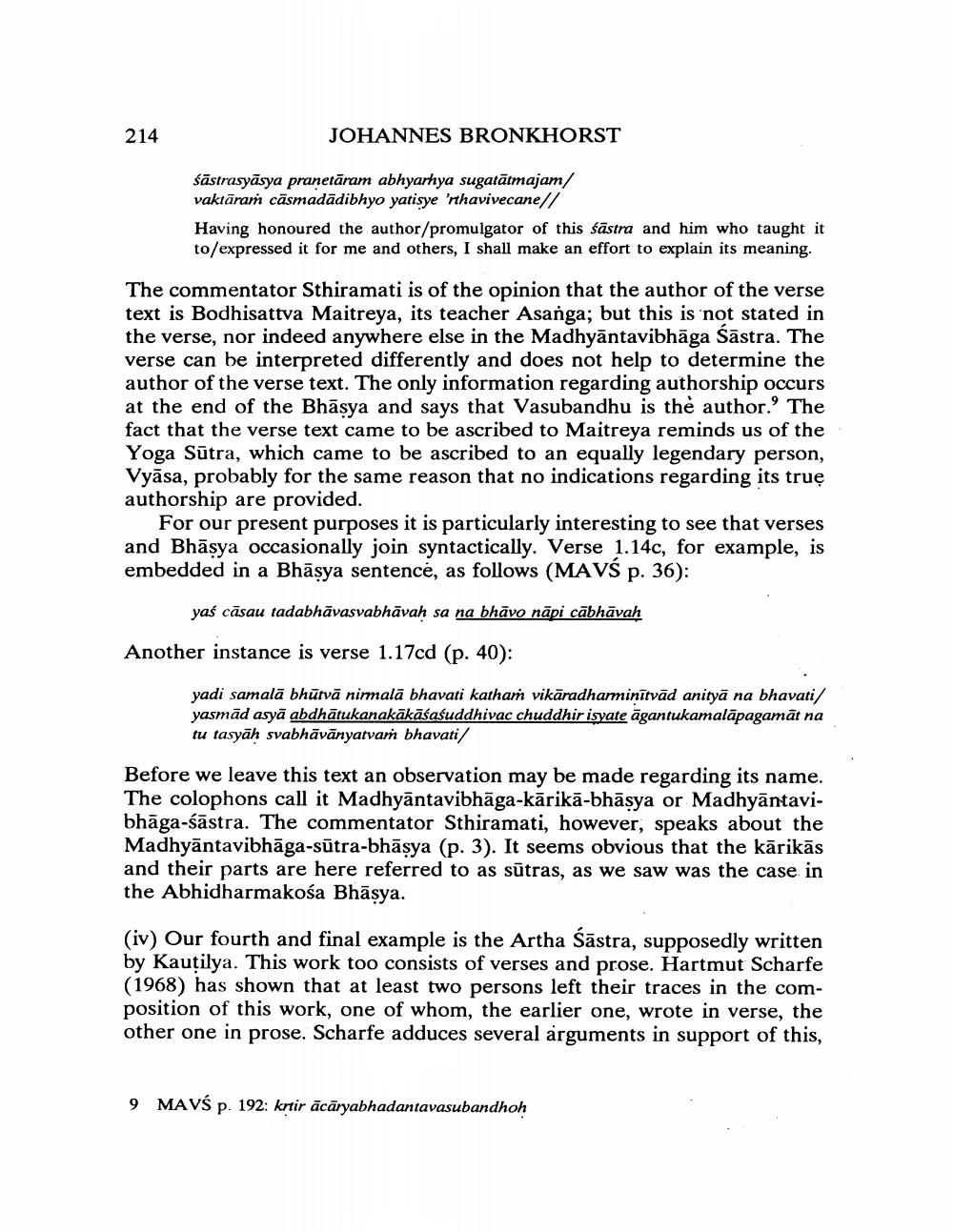Book Title: Two Literary Conventions Of Classical India Author(s): Johannes Bronkhorst Publisher: Johannes Bronkhorst View full book textPage 5
________________ 214 JOHANNES BRONKHORST śästrasyasya pranetāram abhyarhya sugatāmajam/ vaktāram cāsmadādibhyo yatiṣye 'rthavivecane// Having honoured the author/promulgator of this sastra and him who taught it to/expressed it for me and others, I shall make an effort to explain its meaning. The commentator Sthiramati is of the opinion that the author of the verse text is Bodhisattva Maitreya, its teacher Asanga; but this is not stated in the verse, nor indeed anywhere else in the Madhyāntavibhāga Śāstra. The verse can be interpreted differently and does not help to determine the author of the verse text. The only information regarding authorship occurs at the end of the Bhasya and says that Vasubandhu is thè author." The fact that the verse text came to be ascribed to Maitreya reminds us of the Yoga Sutra, which came to be ascribed to an equally legendary person, Vyasa, probably for the same reason that no indications regarding its true authorship are provided. For our present purposes it is particularly interesting to see that verses and Bhāṣya occasionally join syntactically. Verse 1.14c, for example, is embedded in a Bhasya sentence, as follows (MAVS p. 36): yaś cāsau tadabhāvasvabhāvaḥ sa na bhāvo nāpi cābhāvaḥ Another instance is verse 1.17cd (p. 40): yadi samalā bhūtvā nirmalā bhavati kathaṁ vikāradharmiṇītvād anityā na bhavati/ yasmād asya abdhātukanakākāśaśuddhivac chuddhir isyate āgantukamalāpagamāt na tu tasyaḥ svabhāvānyatvari bhavati/ Before we leave this text an observation may be made regarding its name. The colophons call it Madhyāntavibhāga-kārikā-bhāṣya or Madhyāntavibhāga-sastra. The commentator Sthiramati, however, speaks about the Madhyāntavibhāga-sūtra-bhāṣya (p. 3). It seems obvious that the kārikās and their parts are here referred to as sūtras, as we saw was the case in the Abhidharmakosa Bhāṣya. (iv) Our fourth and final example is the Artha Śästra, supposedly written by Kautilya. This work too consists of verses and prose. Hartmut Scharfe (1968) has shown that at least two persons left their traces in the composition of this work, one of whom, the earlier one, wrote in verse, the other one in prose. Scharfe adduces several arguments in support of this, 9 MAVS p. 192: kṛtir ācāryabhadantavasubandhoḥPage Navigation
1 ... 3 4 5 6 7 8 9 10 11 12 13 14 15 16 17 18
